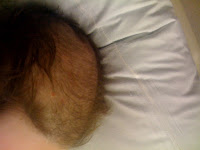April 13th, 2010 by Nancy Brown, Ph.D. in Better Health Network, Health Tips, News, Opinion, Research
No Comments »


Baby boomers may have a new reputation. According to new cancer research, they are five times more likely to be diagnosed with malignant melanoma — the type of skin cancer that kills the most people.
The incidence rates of melanoma have risen from 7 cases per 100,000 people in the 1970’s to 36 cases per 100,000 today. The rising rate corresponds to the increase in tanning during the 1970’s, when baby boomers were young adults.
Parents and grandparents of teens should be checked by dermatologists as part of their preventive healthcare. I can only hope that teens today will be responsible for the stopping of this increase as they’ve grown up with the message that sunscreen is important and should be a daily part of their lives.
Photo credit: tata_aka_T
This post, Baby Boomers And Skin Cancer, was originally published on
Healthine.com by Nancy Brown, Ph.D..
April 11th, 2010 by Happy Hospitalist in Better Health Network, Health Tips, Humor, Opinion, True Stories
No Comments »

 A reader sent me this really sad story that got me thinking about hair restoration for women
A reader sent me this really sad story that got me thinking about hair restoration for women :
:
Happy, I wanted to share with you this picture of a woman who’s lost all hope. I saw her a few years back during my psychiatry rotation. As you can see, it looks like she’s going bald, but in fact, during her fits of rage and depression she’s actually pulling out her own hair. How sad is that? Just another example of what we docs take care of on a daily basis.
Man, that’s unbelievable. I don’t know much about classic female pattern baldness. From what I’ve read it’s usually a diffuse loss of hair everywhere or a central expansion of hair loss but rarely does it encompass the entire scalp. It’s usually caused by hormones, aging and genes. In advanced age, I’ve seen more than my fair share of elderly women who have more hair on their chin then they do on their head. Read more »
*This blog post was originally published at The Happy Hospitalist*
April 1st, 2010 by RamonaBatesMD in Better Health Network, Health Tips, News, Opinion, Research
1 Comment »

I have written two posts in the past on proper disposal of unused medications, and I have always been mindful of the medicines as a source of environmental water pollution. This past week the American Chemical Society reminded (head-slapped me) that topical medications are a source of environmental water pollution from their active pharmaceutical ingredients (APIs). Yes, the simple act of bathing washes hormones, antibiotics, and other pharmaceuticals down the drain into the water supply.
Ilene Ruhoy, M.D., Ph.D. and colleague Christian Daughton, Ph.D. looked at potential alternative routes for the entry into the environment by way of bathing, showering, and laundering. These routes may be important for certain APIs found in medications that are applied topically to the skin — creams, lotions, ointments, gels, and skin patches. These APIs include steroids (such as cortisone and testosterone), acne medicine, antimicrobials, narcotics, and other substances. Read more »
*This blog post was originally published at Suture for a Living*
March 18th, 2010 by RamonaBatesMD in Better Health Network, Medical Art
No Comments »

In the March 3, 2010 issue of JAMA, there is a poem by Sarah Wells called “Hymn of Skin.” While I enjoyed the whole poem, my favorite part is:
Plastic surgeon of the heavens, how I delight
in a furrowed brow, crow’s feet, age spots—
wrinkle me up a dozen times to show I lived
hard, good, funny—after all beauty, being what it is,
is only skin deep—may my soul seep through
dry scales of later hands, resting tranquil in my lap.
O omniscient dermatologist, what ingenuity,
past hurts evident in scrapes and scars—
a clumsy stumble down uneven concrete stairs,
knees and ankle raw and dripping; pockmarked cheeks
from teenage zits—all healed, in the end, but not forgotten.
How often we need reminders of where we’ve been.
*This blog post was originally published at Suture for a Living*
March 11th, 2010 by RamonaBatesMD in Better Health Network, Research
No Comments »

In the January issue of the Archives of Dermatology, there is a short article (full reference below) in which the authors have attempted to use in vitro lab techniques to improve in vivo techniques for tattoo removal.
Fragmentation of the tattoo particles by the laser leads to small pigment particles, unknown decomposition products, and newly generated chemical compounds that may then be removed from the skin by means of the lymphatic system, leading to a noticeable lightening of a colored tattoo. Read more »
*This blog post was originally published at Suture for a Living*





 A reader sent me this really sad story that got me thinking about
A reader sent me this really sad story that got me thinking about 








